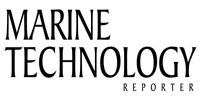
Page 16: of Marine Technology Magazine (July 2025)
Read this page in Pdf, Flash or Html5 edition of July 2025 Marine Technology Magazine
LANDER LAB #15 near the trench. Nonetheless, the launch proved successful, concluding in the re- trieval of the vehicle along with data and samples for subsequent analysis. The ocean lander was successfully deployed again on two later missions 1) October 2 to October 18, 2024, RV Cabo de Horno (2 lander missions), and 3) January 17 to
January 25, 2025, RV Cabo de Horno (4 lander missions).
The primary burnwire ballast release was activated at 18h by the DAC. For re- dundancy, the burnwire could also have been activated by the EdgeTech BART
Figure 4 acoustic system, Burn Wire 1 code. The
Simpli? ed ? owchart of the ? rmware for integrated operation of the lander. During the
DAC is used in this con? guration as a moored mode, the DAC increases the sampling period of the oceanographic instruments to countdown timer release. Bottle B1 was 10 min. During this period, the system remains in sleep mode, only waking up every 1 min closed on ascent by the DAC using a to measure the depth, without turning on the CTD pump. “C_min” is a threshold conductivity to start the downcast, “Th” is a bottom detection algorithm, “P_N” is Pmax +Pnoise control burn wire programmed to snap at 7100m parameter, “P_Sh” is depth to ? nish upcast. (Image by Victor Villagrán, UdeC) as determined by the upcast CTD data.
Bottle B2 burnwire was closed on as- cent by the EdgeTech acoustic system,
Burn Wire 2 code. The drop arm was de- ployed by a burnwire triggered when the
DAC detected arrival on the seabed, in- dicated by static pressure measured over a de? ned time interval. After the vehicle
Figure 5
Bathymetry showing the oceanographic mooring sites of IDOOS. The red point on the left marks the deep mooring location at the indicated latitude and longitude, near which lander deployments are regularly conducted. (Illustration by by Óscar Pizarro, UdeC)
Figure 7Figure 6
Schematic diagram illustrating the elements of (a) Trap attached to the ocean lander with amphipods collected during the ? rst the Integrated Deep-Ocean Observing System, deployment into the Atacama Trench. (b) Various shades and sizes of Eurythenes
IDOOS (Illustration by Felipe Gamonal, UdeC).
atacamensis, (Photo by Matías Pizarro, UdeC) 16 July/August 2025
MTR #5 (1-17).indd 16 MTR #5 (1-17).indd 16 7/29/2025 2:31:00 PM7/29/2025 2:31:00 PM

 15
15

 17
17
